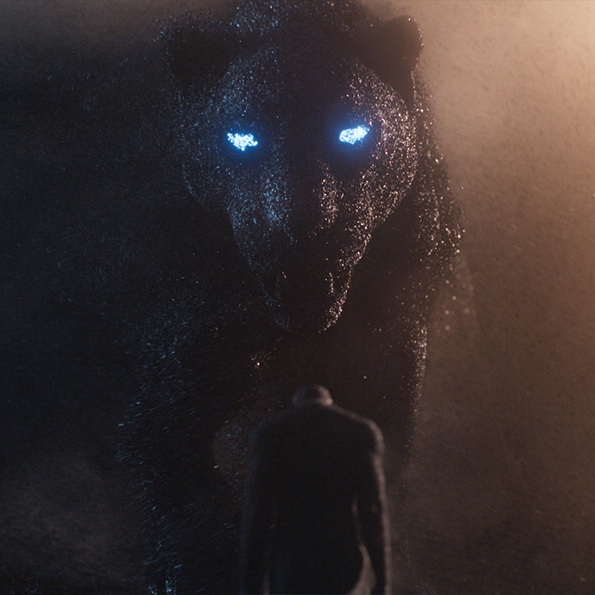
The Phoenix between Myth and the Marvel Universe
Among the numerous mythological creatures that populate the Marvel Universe, one of the most unique, as well as one of the most significant and powerful, is undoubtedly the Phoenix.
With all the recent talk of the X-Men following the release of the movie ‘Doctor Strange in the Multiverse of Madness,’ it seemed interesting to delve a little into the history of this famous legendary bird. Although it appears in various mythologies, the conception of the Phoenix always exhibits very similar traits, foremost among them being a symbol of immortality, all characteristics that Marvel has adopted and reworked to fit its universe. So, let’s explore together the various stories of the Phoenix.
Phoenix and Jean Grey
When we talk about the Phoenix within the Marvel Universe, the immediate association is with Jean Grey of the X-Men. Let’s see why.
The Phoenix, portrayed by the House of Ideas as a bird enveloped in flames, is a cosmic entity, one of the most powerful and ancient beings in existence. Throughout its existence, it has chosen various hosts to carry out its mission, whether that be to advance a society or to destroy it.
Several characters have served as vessels for the Phoenix, including Rachel Grey, Cable, Emma Frost, the Stepford Cuckoos and Hope Summers. However, the most significant of all is undoubtedly Jean Grey. The connection between the Phoenix and Jean has become so close that the bird itself has stated that she and Jean are to be considered as a single entity.
Having completed its work, the Marvel Phoenix retreats to the White Hot Room, a place beyond space and time, entering a state of dormancy until its next advent.
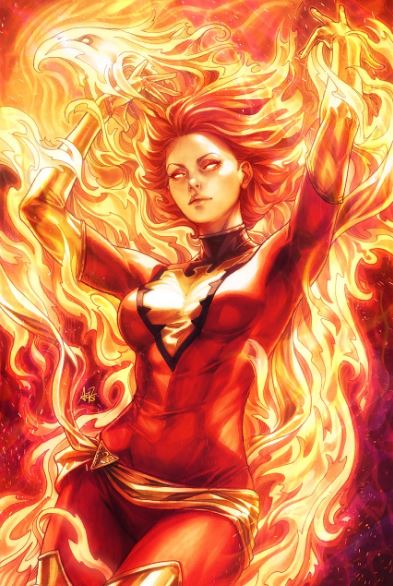
©Marvel. All Rights Reserved.
The Egyptian Bennu
The archetype of the Phoenix as we know it is the Egyptian Bennu or Benu (bnw). Herodotus (Histories II, 73, 1-4) tells us that the Phoenix (Herodotus was Greek and thus used this name) would visit Egypt every 500 years. More precisely, she did so when her father died, coming from Arabia (hence the epithet “Arabian Phoenix”) to bury him in Egypt in the temple of Helios (again, Herodotus uses the greek name; it was properly the temple of Atum-Ra).
This story was recounted to our author by the inhabitants and priests of Heliopolis, the location of the temple in question (if you want to learn more about the city and the cult of Atum-Ra, we refer you to our previous article).
The Egyptians believed that the Bennu was one of the forms taken by Atum-Ra and, therefore, like him, had emerged from the primordial waters. Thus, the Bennu was associated with the Sun and Atum-Ra’s characteristic of self-generation was also attributed to the legendary bird. Unlike our common imagery, the Bennu is depicted as a heron and, most notably, lacks the element of fire that distinguishes our Phoenix so prominently.
The Greco-Roman Phoenix
The Phoenix, as we conceive it, is a Greco-Roman elaboration. In the tradition of the classical world, there circulated a version of the myth with various variants, especially concerning its period of absence and its lifespan. Like in the egyptian tradition, they also believed the Phoenix came from Arabia, but, more importantly, they were the ones to associate fire with this legendary bird.
Following Herodotus’ account, a Roman senator from the age of Sulla, Manilius, composed an entire poem about the Phoenix. This work has been lost, but its contents are relayed by Pliny the Elder (Naturalis Historia, X, 2, 4). In this version, when the Phoenix dies, it is reborn as a worm and, having become a bird pays funeral honors to its predecessor.
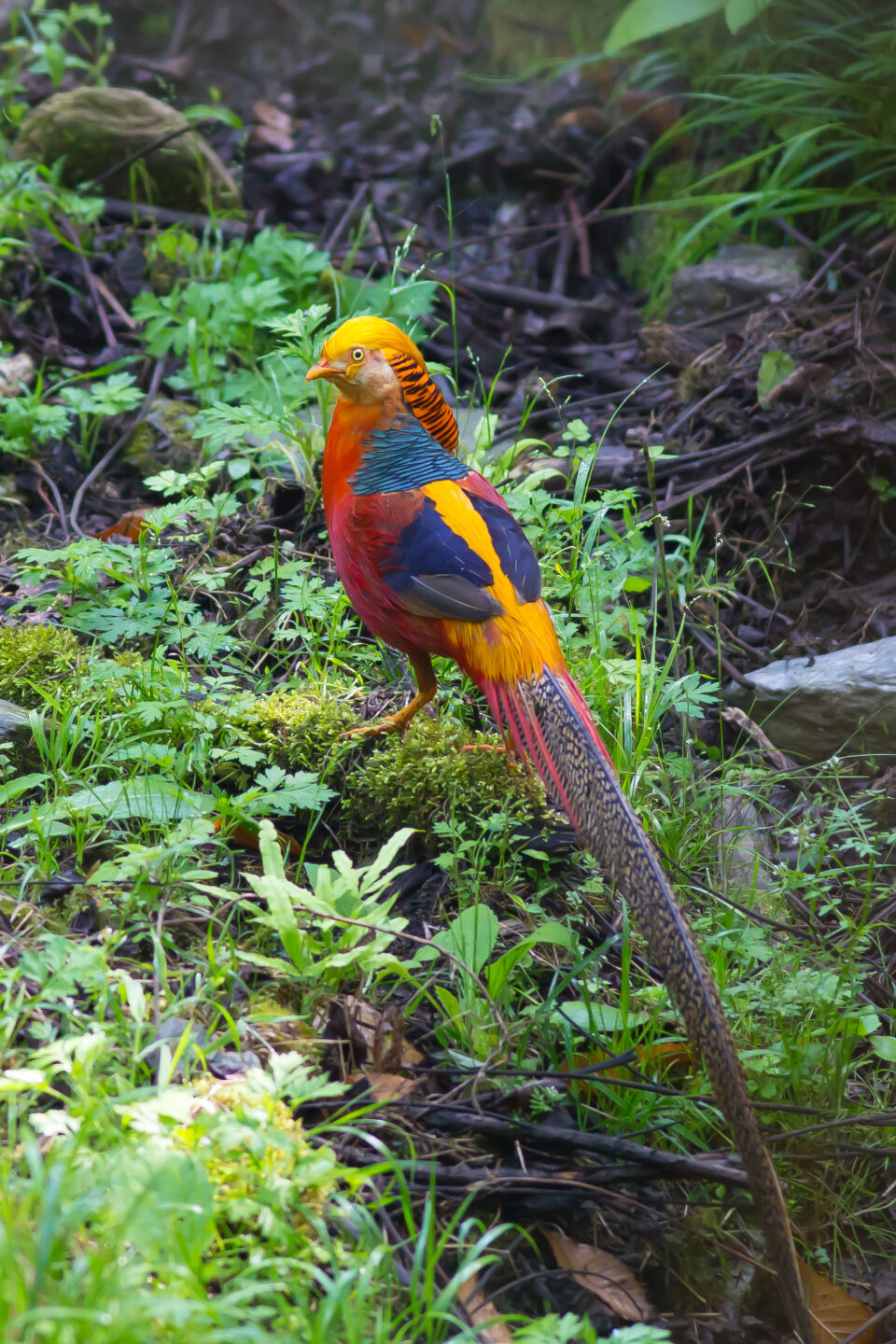
The Phoenix, of course, couldn’t be absent from Ovid’s Metamorphoses (Met. XV, 391-407), but it is from the end of the 1st century AD onwards that authors like Statius, Martial, Pliny and Tacitus present the version of the bird burning and rising from the ashes. The association of the Phoenix with the Temple of the Sun (referred to as both Helios and Hyperion, the Titan of primordial light, father of Helios, the Sun) is, of course, maintained.
During the Roman era, the Phoenix was associated with good and enduring governance, to the extent that emperors such as Hadrian and Antoninus Pius used it in imperial symbolism.
In the Latin version of the Phoenix, its appearance changes considerably. It is no longer similar to a heron but rather as large as an eagle, crowned with a nimbus, with shining gold around its neck and the rest of its body purplish, with pink feathers adorning its azure tail and a throat adorned with a tuft of feathers on its head. In short, much more colorful and particularly similar to the Chinese golden pheasant, as you can see above.
The Phoenix in the Middle Ages
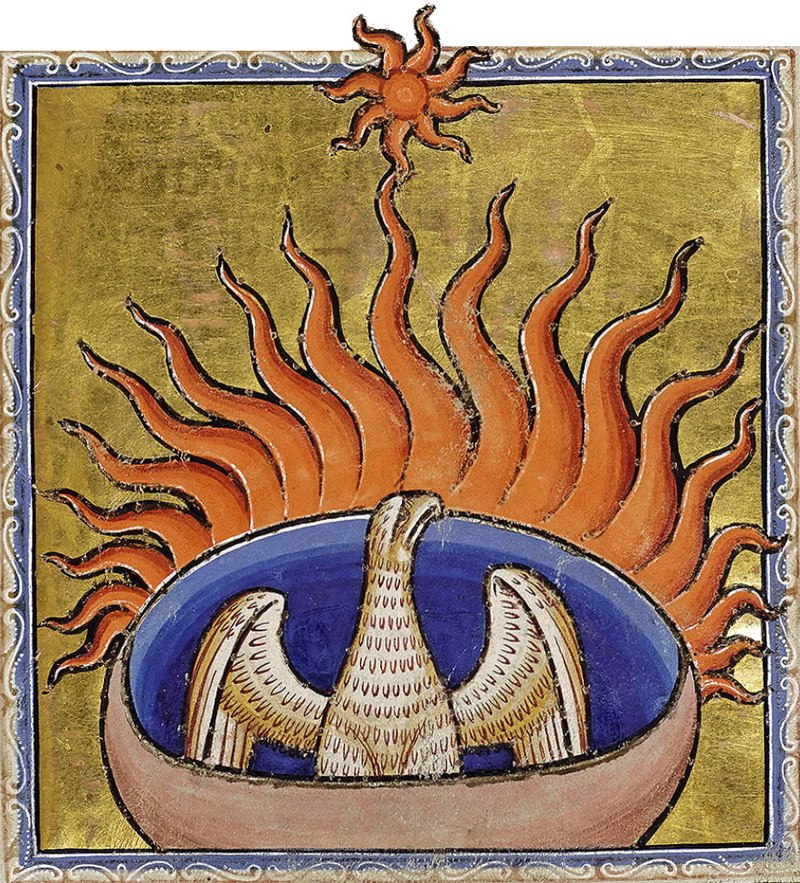
Despite the advent of Christianity, the Phoenix was one of those creatures preserved by the new religion with a positive character. Its aspect of rebirth was indeed exploited to link it to the resurrection of Christ, making the Phoenix a symbol of triumph over death.
Of course, not everything written in the Middle Ages was related to religion. The Phoenix appears in many medieval bestiaries that more or less adhere to the ancient myth, while poets used it as a model to represent the burning passion of love.
It is thanks to these poets that the association between a woman and the Phoenix was born. First as a literary character in Chrétien de Troyes’ courtly romance “Cligès” from 1176, and later as a woman, a theological metaphor for virtues.
In the Middle Ages, the visual tradition of depicting the Phoenix as similar to a purple eagle, often rising from the flames, became more pronounced.
The Phoenix in China and Japan
In our present-day perception, our understanding of the Phoenix has also been influenced in part by the East, so let’s take a look at that.
In China, depictions of a mythical bird can be traced back to the Neolithic period. However, it was during the Han Dynasty (206 BC – 220 AD) that the Phoenix became a recurring presence in the arts, but it was represented as two birds: Feng, the male, and Huang, the female, symbolizing Yang and Yin. Over time, the two birds merged, becoming a single female being named Fenghuang. The Phoenix was thus assimilated into the role of the Empress and became the counterpart to the Dragon, which was associated with the Emperor (if you’re interested in the history of the dragon in China, you can refer to our previous article).
In China as well, the Phoenix symbolizes peace and harmony and appears during happy times. In the presence of bad governance, the Phoenix does not appear anymore, which explains why it has become a mythological creature.
The Chinese Fenghuang is a polymorphic bird with a rooster’s beak, swallow’s face, chicken’s forehead, snake’s neck, duck’s breast, turtle’s back, deer’s hindquarters and fish’s tail.
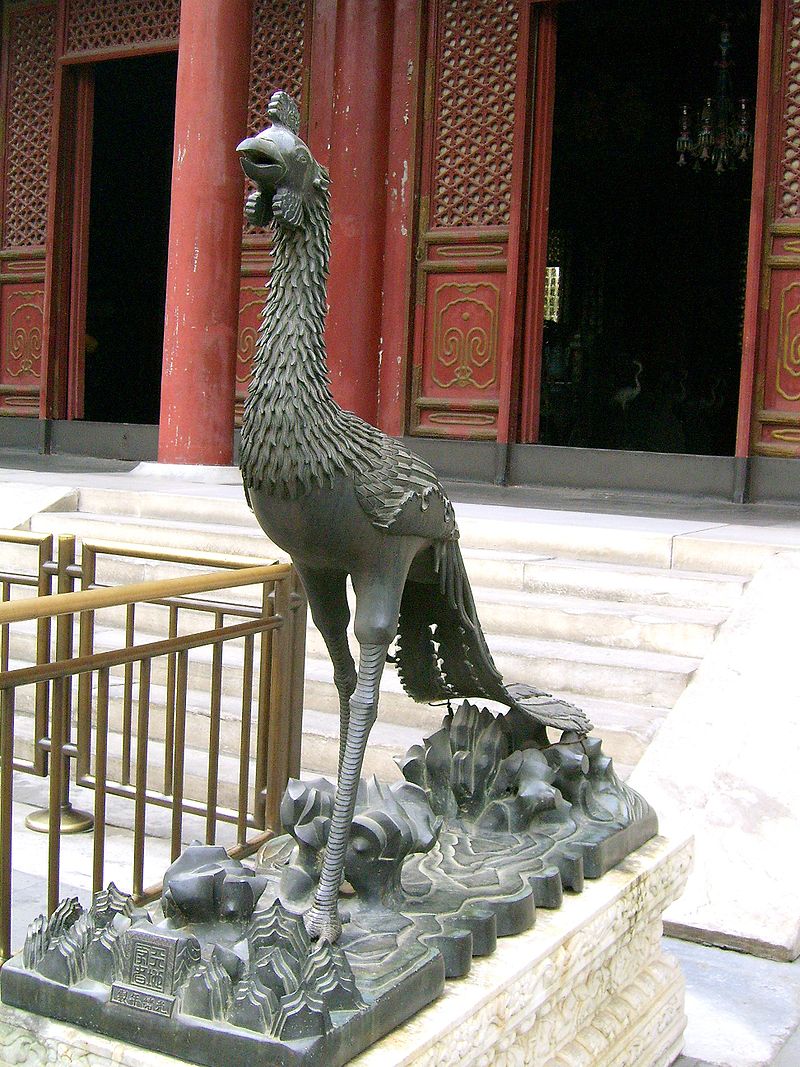
The Chinese Fenghuang corresponds to the Japanese Ho-ho or Karura, which resembles an eagle that breathes fire (yes, the Pokémon Ho-oh is a clear reference to it).
Fenghuang and Ho-ho are often associated with the Great Vermilion Bird of the South, known as Nán Fāng Zhū Què in Chinese or Suzaku in Japanese. Although they are distinct beings, they are frequently merged into a single entity. The Nán Fāng Zhū Què is one of the four great animal symbols of Taoism and presides over the South. The other sacred animals include Bai Hu/Byakko (the white tiger) (or sometimes the Qilin or Kilin, the Chinese unicorn) for the West, Xuan Wu/Genbu (the black tortoise) for the North, and Long/Seiryu (the blue dragon) for the East.
And so, we’ve reached the end of our article. If you enjoyed it or would like to share stories of characters inspired by the Phoenix or the other sacred animals, please let us know on our social channels!
Here you can also find the Italian version of this article
Sources
- « L’iconographie du phénix à Rome », Images de l’animal dans l’Antiquité. Des figures de l’animal au bestiaire figuré, Schedae 2009, n° 17, fasc. 2, p. 107-130
- « L’œuf du phénix. Myrrhe, encens et cannelle dans le mythe du phénix », L’animal et le savoir, de l’Antiquité à la Renaissance, Schedae 2009, n° 6, fasc. 1, p. 73-106
- Francesco Zambon, Alessandro Grossato. Il mito della fenice in Oriente e in Occidente, Venezia, Marsilio Editori, 2004
- « Un bilan de la recherche contemporaine sur le mythe du phénix », Roda da fortuna 2015, 4/1, p. 257-273
- Marcuzzi, Giorgio. “MITO E REALTÀ NELL’ARABA FENICE: UN APPROCCIO ECOLOGICO.” Lares, vol. 51, no. 2, 1985, pp. 249–58, http://www.jstor.org/stable/44630312. Accessed 16 May 2022.
- Isabella Doniselli Eramo, Il drago in Cina – Storia straordinaria di un’icona, Luni editrice, 2019
- Immagine di copertina da: https://static.wikia.nocookie.net/marveldatabase/images/d/d6/X-Men_Phoenix_Endsong_Vol_1_1_Textless.jpg/revision/latest?cb=20081126195801
